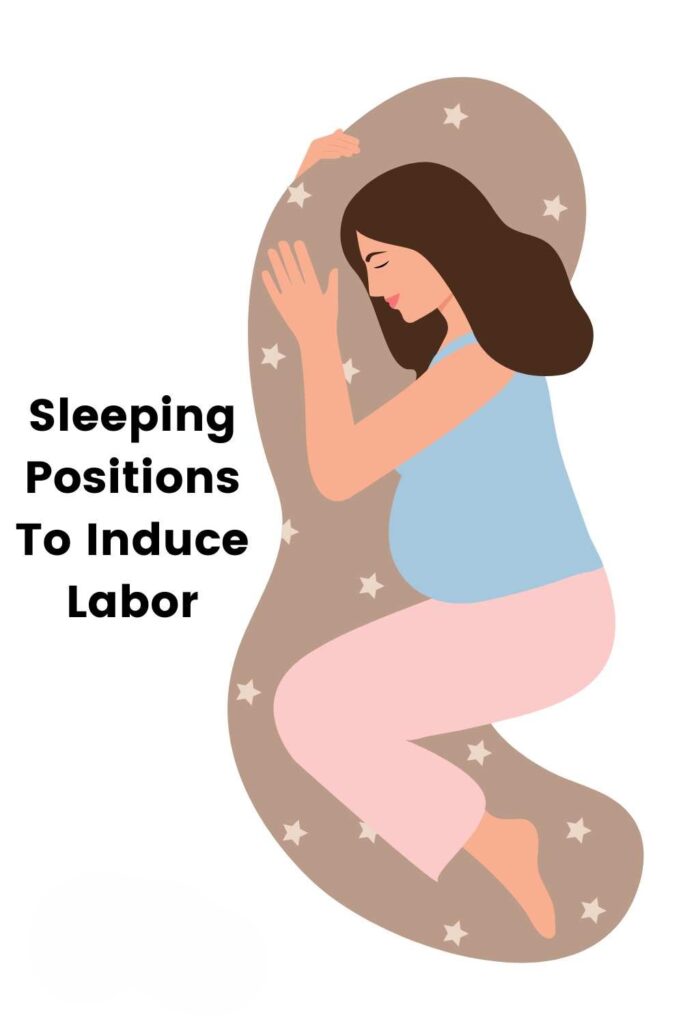Are you pregnant, Congratulations then! But this pregnancy comes along with many precautions and pains. As the due date approaches, the anticipation of meeting your baby becomes overwhelming. One of your major concerns is to let labor occur naturally, and there are many safe and effective methods you can try to gently encourage the process. One of such approaches involves exploring different sleeping positions to induce labor naturally. Now, let us discover the different sleeping positions to facilitate your labor onset!
Understanding the Importance of Safe Practices
It is very important for you to consult your doctor before attempting any labor-inducing technique. As you know every pregnancy is unique, and only your personal doctor can give you personalized guidance to meet your specific needs.
Also, understand that if you try to induce labor prematurely or without medical supervision it can pose serious risks to both the mother and the baby. So, we emphasize on waiting until at least 39 weeks. Always adopt safe, and evidence-based practices under professional guidance.
Exploring Sleeping Positions to Induce Labor:
Now let me introduce you to various sleeping positions that can help in inducing your labor. Your sleeping position can play a great role by influencing your hormone levels, pelvic alignment, and uterine contractions which will potentially aid in labor initiation. Let’s delve in now:
1. On Your Left Side:
One of the recommended sleeping positions in pregnancy is to sleep on your left side. It is often recommended especially in the third trimester of pregnancy. This position promotes optimal circulation to the uterus and placenta and ensures adequate oxygen and nutrient supply to your baby.
Additionally, if you will sleep on the left side it will help alleviate pressure on the inferior vena cava, a large vein that returns blood to the heart from your lower body. By reducing pressure on this vein, blood flow and circulation remain unimpeded.
During labor sleeping on your left side aids in cervical ripening, which refers to the softening and thinning of the cervix in preparation for childbirth. This position encourages the baby’s head to apply pressure to the cervix, potentially kickstarting the dilation process.
Furthermore, if you lie on your left side it helps to reduce pressure on your spine and back. It will promote overall comfort during sleep.
2. Knees-To-Chest:
Another important and helpful sleeping position is gently pulling your knees to your chest to provide relief and encourage optimal fetal positioning. It is not a traditional way of sleeping.
This position will help you align the pelvis, creating more space for your baby to descend into the birth canal. By opening up the pelvic outlet, your baby’s passage through the birth canal may be facilitated.
Lie on your back and gently pull both knees toward your chest. You can use a pillow under your hips for added support and comfort.
3. Prop Up Your Upper Body:
In this position you can elevate your upper body with extra pillows to relieve pressure on your back and encourage uterine contractions, potentially aiding in labor initiation.
If you are experiencing any discomfort or back pain during sleep this position is beneficial for you.
In this position, by elevating your upper body, you can create a slight incline that may help you relax the pelvic floor muscles and encourage the descent of the baby into the birth canal.
You need to place the pillows under your head, shoulders, and upper back to achieve a comfortable elevation while maintaining proper alignment of the spine.
By incorporating these sleeping positions to induce labor naturally into your routine you can a lot of benefits and help in facilitating your labor.
Also read: 11 Weird Things That Can Happen Before Labor
Other Natural Methods to Encourage Labor
There are other natural methods as well that can encourage labor and give comfort to you:
- Supportive Pillows: you can use extra pillows for support and comfort to alleviate discomfort and promote relaxation.
- Partner Engagement: The involvement of your partner, such as speaking or singing to the baby, and providing massages, can enhance your relaxation and stimulate fetal movement.
- Practice Makes Perfect: As it is said consistency is the key. By doing regular practice of labor-inducing techniques you can increase their effectiveness when the time for labor arrives.
FAQs
Q1: What sleeping positions help you dilate?
There are many sleeping positions to help you dilate such as sleeping on your left side, and sleeping on the knees to the chest.
Q2: How can lying down induce labor?
Lying down in specific positions can stimulate your hormone release promote optimal fetal positioning, and encourage uterine contractions in you to initiate labor.
Q3: How can I speed up labor in bed?
You can speed up labor in bed by practicing labor-inducing sleeping positions, utilizing supportive pillows, and engaging yourself in different relaxation techniques.
Q4: Does resting help induce labor?
Yes, rest is essential during pregnancy. You can induce labor by specific sleeping positions and relaxation techniques to help stimulate your labor naturally.
Conclusion:
As you are eagerly waiting for the arrival of your bundle of joy. It is important to explore safe and effective methods to encourage labor onset. It can provide you with comfort and empowerment. Some of the helpful methods for you are; by incorporating gentle sleeping positions to induce labor naturally, relaxation techniques, and partner involvement. This can support your body’s natural processes while embracing the journey of your childbirth with confidence. Always remember to prioritize safety and consult your doctor for personalized guidance throughout your pregnancy journey. Have a happy and safe journey of pregnancy!
Medical Disclaimer: We only provide information for educational purposes. Do not consider it a medical advice for you. In case of need, consult the healthcare professional for proper diagnosis and treatment.
Disclaimer: The content on Wellness Derive is for informational purposes only and not a substitute for professional medical advice, diagnosis, or treatment. Always consult a healthcare provider for medical concerns.



